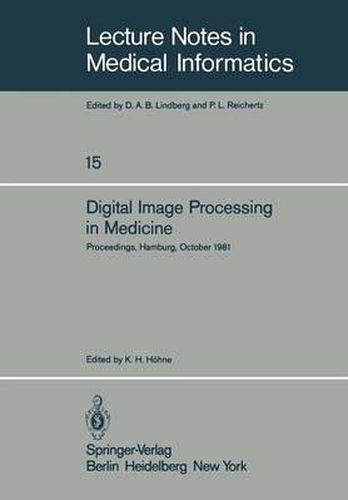Readings Newsletter
Become a Readings Member to make your shopping experience even easier.
Sign in or sign up for free!
You’re not far away from qualifying for FREE standard shipping within Australia
You’ve qualified for FREE standard shipping within Australia
The cart is loading…






This title is printed to order. This book may have been self-published. If so, we cannot guarantee the quality of the content. In the main most books will have gone through the editing process however some may not. We therefore suggest that you be aware of this before ordering this book. If in doubt check either the author or publisher’s details as we are unable to accept any returns unless they are faulty. Please contact us if you have any questions.
In diagnostic medicine a large part of information about the patient is drawn from data, which, more or less, are represented in an opti calor pictorial form. There is a very wide range of such data as e.g. the patients appearance, the various kinds of radiological images, or cytological imagery. In conventional diagnostics the data, as it comes from the acquisition device, is perceived by the physician and is interpreted with the help of a large amount of a priori knowledge to give a diagnostic finding. During the last 15 years a steadily rising number of attempts have been made to support these processes by the application of com puters. The attempts mainly concentrate on three objectives: 1. Support of the perception process by the production of better or new types of images, e.g. by Computer tomography or Computer angio graphy (image processing) . 2. Automation of the interpretation process, e.g. for bloodcell dif ferentiation (pattern recognition) . 3. Management of the steeply rising amount of medical image data in the hospital (image data bases) . Although the early applications of digital methods aimed at the second . . objective, in the last years much more success has been a achieved in the support of the perception process by methods of image process ing. The reason for this is obvious - in the case of automatic interpre tation the a priori knowledge of the physician has to be formalized.
$9.00 standard shipping within Australia
FREE standard shipping within Australia for orders over $100.00
Express & International shipping calculated at checkout
This title is printed to order. This book may have been self-published. If so, we cannot guarantee the quality of the content. In the main most books will have gone through the editing process however some may not. We therefore suggest that you be aware of this before ordering this book. If in doubt check either the author or publisher’s details as we are unable to accept any returns unless they are faulty. Please contact us if you have any questions.
In diagnostic medicine a large part of information about the patient is drawn from data, which, more or less, are represented in an opti calor pictorial form. There is a very wide range of such data as e.g. the patients appearance, the various kinds of radiological images, or cytological imagery. In conventional diagnostics the data, as it comes from the acquisition device, is perceived by the physician and is interpreted with the help of a large amount of a priori knowledge to give a diagnostic finding. During the last 15 years a steadily rising number of attempts have been made to support these processes by the application of com puters. The attempts mainly concentrate on three objectives: 1. Support of the perception process by the production of better or new types of images, e.g. by Computer tomography or Computer angio graphy (image processing) . 2. Automation of the interpretation process, e.g. for bloodcell dif ferentiation (pattern recognition) . 3. Management of the steeply rising amount of medical image data in the hospital (image data bases) . Although the early applications of digital methods aimed at the second . . objective, in the last years much more success has been a achieved in the support of the perception process by methods of image process ing. The reason for this is obvious - in the case of automatic interpre tation the a priori knowledge of the physician has to be formalized.